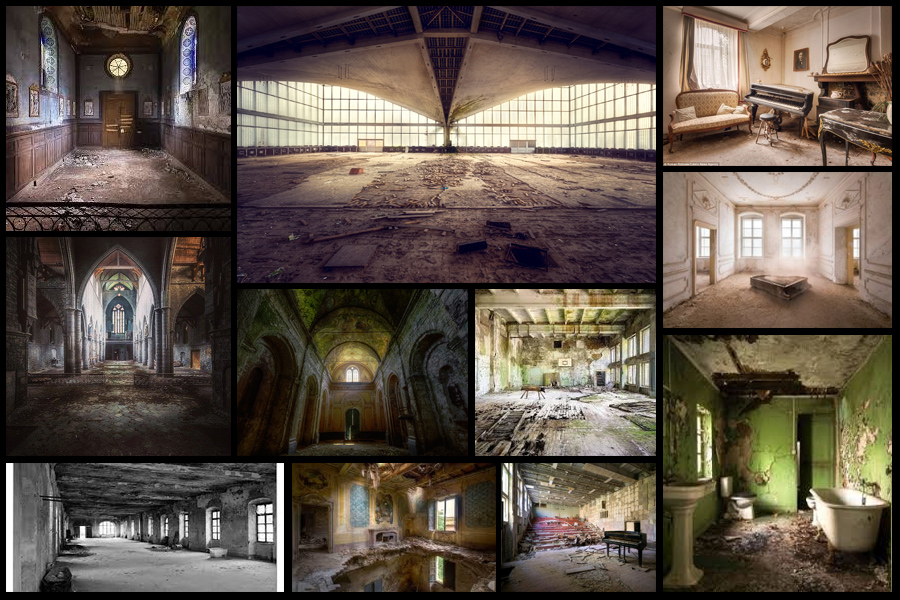PHOTO-SHOOT PLAN
Based on my initial ideas (2 posts previous) for this project, I have made a plan for an initial photo-shoot that will get me started on composing my desired images.

Based on my initial ideas (2 posts previous) for this project, I have made a plan for an initial photo-shoot that will get me started on composing my desired images.

Who is he?
Robroek is a 31-year-old urban photographer born in the South of the Netherlands, who as a child was surrounded by empty, abandoned and decaying buildings. Further into his life curiosity struck him and he wanted to know the story behind the reason for the state of each building, who used to live there? This led him to travel the world looking for places like these, allowing him to witness areas closed to the public eye. His aim is to create the memories and images that may once have been provided by these rooms, and wants to improve the perspective of those who look at the images.
Robroek specializes in uniquely capturing interiors and exteriors of a wide variety of buildings, cultural heritage sites and monuments, working only with the natural light provided. It is evident in his work that he wishes to highlight what is not usually seen to the public, and how there is a beauty in the untouched nature of it all. His photos range from a variety of locations, from tombs to churches, to mansions, each image showing as little human intervention as possible, creating eerie but beautiful landscapes through the use of natural lighting from the deteriorating landscape.
After researching the background of the photographer I decided to make a mood board and then analyze one of his images, this would help me in my next shoot to be inspired by composition and lighting in location. Here are some examples of his work: One of his images I decided to analyze was ‘Sitting in a church’, I chose this because of its relevance to the topic of chairs that most of my shoots have within them.
One of his images I decided to analyze was ‘Sitting in a church’, I chose this because of its relevance to the topic of chairs that most of my shoots have within them.  Technical: Within the image Robroek uses a low exposure to capture a contrast between the lights and darks illuminated through the windows of the chapel. The idea of abandonment is portrayed drastically by how Robroek has used people covered in old blankets to bring together the time when the church was and wasn’t used by people, this as a result creates eeriness to the piece as the hidden bodies and faces creates a haunted uneasiness to the overall picture.
Technical: Within the image Robroek uses a low exposure to capture a contrast between the lights and darks illuminated through the windows of the chapel. The idea of abandonment is portrayed drastically by how Robroek has used people covered in old blankets to bring together the time when the church was and wasn’t used by people, this as a result creates eeriness to the piece as the hidden bodies and faces creates a haunted uneasiness to the overall picture.
Visual: Visually the photo is well composed, this is mainly brought about through the implementation of symmetry which highlights the ghostly figures sat in the furthest corners of the church whilst also creating aestheticism as well. The center window is used as the focal point of the entire image which puts emphasis on not just the light sources but also the figures illuminated by them, from this it allows a more uplifted perspective of the entire image as it does not cast the figures in a dark light, rather than just a forgotten one.
Conceptual: Conceptually the image is meant to focus on the contrast between the building before and after it was abandoned, by doing this it creates an image from two different time frames and almost freezes it capturing the past in a modern image. This highlights hidden beauty that would not usually be seen in a church being used or just an abandoned one, rather instead a contemporary one.